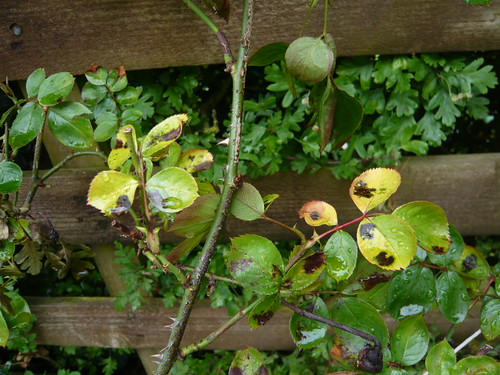Cure and Avoid Blackspot on Roses
Black spot is an ugly and plant threatening, fungal disease causing problems with Roses. Due to ,my inattention my roses were ravaged this year!
Avoid Black Spot
- Keep the ground clear of any diseased leaves or plant matter.
- Burn affected leaves, do not compost as this just recycles the spores.
- Use clean tools or dip them in fungicide particularly those that contact the sap like secateurs or loppers.
- Buy disease resistant varieties of rose.
- Allow air to circulate. Black spot likes humid conditions so water carefully.
- Beware black spot can be transmitted from plant to plant. Good hygiene is vital.
Treating Black Spot
- Remove and destroy infected material.
- Spray with a systemic fungicide on both sides of the leaves and the stems of affected plants.
- Sulphur treatments may be effective and are acceptable organic alternatives to chemicals.
- Keep plants stress free by watering then giving a good mulch.
- Water the roots not the whole plant.

Infected leaves turn yellow and die.
Stems and branches that are infected no longer bear leaves or blossom.
